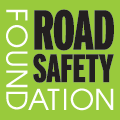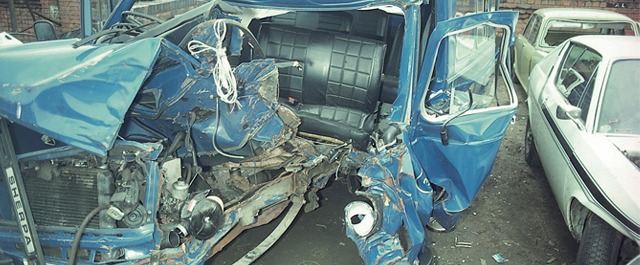IRELAND EURORAP RESULTS 2005: RISK RATING IRELAND’S MAJOR ROADS
The risk of death and injury to drivers is ten times greater on some rural single carriageways in Ireland than the risk on Motorways. More typically, ordinary single carriageways have six times the motorway collision rate and double that of dual carriageways. These are among the findings from the first major analysis of the Irish major road networkcarried out under the European Road Assessment Programme – EuroRAP – published today by the AA.
Irish single carriageways have a collision rate of 11.5 fatal crashes for every billion vehicle kilometres in the Republic, 12.4 per billion in Northern Ireland. Remarkably, given their excellent road safety record overall, British single carriageways are no better with a rate of 12.4.
But most striking is the fact that similar roads in Sweden are far safer. It is clear that there are lessons for Ireland to learn from Sweden in terms of road design and management, including the more widespread provision of crash barriers and ‘2+1’ lane roads.
“91 per cent of collisions on our road network happen on single carriageways.” Says Conor Faughnan, public affairs manager of AA Ireland. “We simply must find ways of making those roads more forgiving. At speeds of 100 kph, head on crashes or collisions with roadside objects or pedestrians are invariably fatal. We must find ways of recognising the causes of these routine, predictable deaths and managing them out of our road system.”
“Driver behaviour will always be the biggest factor in road deaths. But human beings make mistakes. We have to have roads and systems that are designed to be more forgiving when collisions occur. This is being achieved for cars because of the influence of EuroNCAP crash tests. It can be achieved for roads as well, and the type of innovations taking place in Sweden are leading the way.”
The Irish analysis
The EuroRAP report for Ireland is the most comprehensive analysis yet carried out on an all-island basis to assess the safety performance of our major roads. The report challenges road management and road design by comparing best practice across Europe.
EuroRAP assessed the major road network across Ireland. This comprised 5,400 km of road in the Republic and 2,200 km in Northern Ireland. In the Republic, 93 per cent of the network is single-carriageway, 4 per cent dual carriageway and 3 per cent motorway. It accounts for 47 per cent of all vehicular travel and about half of all road traffic deaths. In Northern Ireland, 89 per cent of the assessed network is single carriageway, 6 per cent dual carriageway and 5 per cent motorway. It accounts for 60 per cent of vehicular travel and about half of all road traffic deaths.
Risk rate mapping
Based on actual collision and traffic flow data from 1998 to 2002 inclusive, the report produces a ‘risk rate map’ showing the places on our network where the risk to drivers is greatest. These high-risk roads are colour-coded and shown on the accompanying map which shows the statistical risk of death or injury. The map clearly shows how risk changes as a driver moves from one section of road to another.
Sections of road with higher than average risk are distributed evenly throughout the network. In the Republic, 10 per cent were classified as medium-high-risk and 2 per cent classified as high risk. This equates to 465 km of medium-high-risk and 96km of high-risk road. In the North, 19 per cent of roads (410 km) are classified as medium-high-risk. There are no high-risk sections in Northern Ireland.
These higher-risk sections have been identified as priorities for action by both the NRA and the Roads Service NI, and in many cases road improvements are already underway.
The safety performance does not differ greatly between Northern Ireland and the Republic. The distribution of risk, reflected in the colours of the risk map, is similar to many of the more rural parts of Britain, such as Wales and East Anglia.
What is EuroRAP?
The European Road Assessment Programme was established in 2000 as an international non-profit organisation. It involves more than 20 motoring organisations, road authorities and expert groups across Europe, working together to make European roads safer.
EuroRAP is a sister-programme to the EuroNCAP car crash tests, and it seeks to assess roads across Europe against established criteria. EuroRAP provides safety ratings that enable high-risk sections of road to be identified and mapped. It enables roads authorities to see how well – or how badly – their roads are performing when compared to other countries. EuroRAP works in Ireland through the AA, the AA Motoring Trust, the NRA and the Roads Service NI.
EuroRAP has already published reports for Great Britain, Sweden, the Netherlands, Spain and Switzerland. The Irish report now adds to this body of knowledge, and further publications are being prepared for Austria, Italy and even countries outside of the EU.
Note to Editors:
AA Ireland and the AA Motoring Trust in the UK have been involved in EuroRAP since its inception. The Irish roads authorities joined in 2003. EuroRAP work will continue in Ireland and subsequent reports will measure what improvements have taken place.
The brochure detailing the full results, along with the risk rate map, are available for download on the AA website www.aaireland.ie.
For more information on EuroRAP visit www.eurorap.org.

